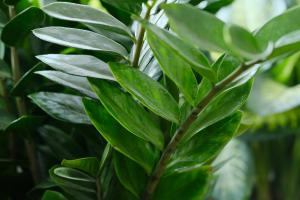Does Iron in Water Hurt Plants?
Iron is an essential micronutrient for plant growth and development. It helps in the formation of chlorophyll and is necessary for the production of energy during photosynthesis. However, like all things, it can be harmful in excess. The presence of iron in water can be beneficial or detrimental to plants, depending on the concentration and other environmental factors.
The Benefits of Iron in Water for Plants
Iron in water can be beneficial to plants, especially those with high iron requirements such as tomatoes, spinach, and other leafy vegetables. Iron serves as a catalyst in various enzymatic reactions that are essential for plant growth and development. It also plays a vital role in the transportation of nutrients within the plant.
Moreover, iron helps in the formation of proteins and enzymes that are crucial for plant metabolism, especially during stress conditions. Plants that receive adequate amounts of iron tend to have better resistance to diseases, pests, and other environmental stresses.
The Harmful Effects of Iron in Water on Plants
Despite its essential role in plant growth and development, excessive amounts of iron in water can be toxic to plants. Iron toxicity can lead to the accumulation of excess iron in the plant's tissues, resulting in the destruction of cell membranes, chloroplasts, and other organelles.
Excessive iron can also lead to a deficiency of other essential micronutrients such as zinc and copper, as it tends to compete with them for absorption into the plant's tissues. The accumulation of iron in the soil can also lower the soil pH, making it more acidic, which can be detrimental to plant growth and development.
Assessing the Iron Concentration in Water
It is essential to assess the iron concentration in the water before using it for irrigation. High iron concentrations can be determined by the presence of staining on sinks, toilets, and other plumbing fixtures. Iron concentrations can also be measured using water testing kits that are readily available in most hardware stores.
It is recommended that the iron concentration in irrigation water should not exceed 2 milligrams per liter for most plants. However, some plants such as rice, wheat, and other cereal crops can tolerate higher levels of iron in water.
Ways to Manage High Iron Concentrations in Water
If the iron concentration in water is found to be high, several methods can be employed to manage it. One option is to use a water softener that can remove excess iron and other minerals from the water. Another option is to filter the water using a sediment filter or reverse osmosis system, which can remove iron particles and other impurities from the water.
It is also recommended to monitor the soil pH and nutrient levels regularly to ensure that the plant's nutritional requirements are being met. In addition, proper irrigation management, such as avoiding overwatering, can prevent excess iron from accumulating in the soil.
Conclusion
Iron is essential for plant growth and development, but excessive amounts can be detrimental to plants. The concentration of iron in water should be assessed before using it for irrigation, and proper management practices should be employed to prevent the accumulation of excess iron in the soil. Monitoring the plant's nutrient levels and soil pH is essential in ensuring proper plant growth and development.

 how many times do yo...
how many times do yo... how many planted tre...
how many planted tre... how many pine trees ...
how many pine trees ... how many pecan trees...
how many pecan trees... how many plants comp...
how many plants comp... how many plants can ...
how many plants can ... how many plants and ...
how many plants and ... how many pepper plan...
how many pepper plan...































